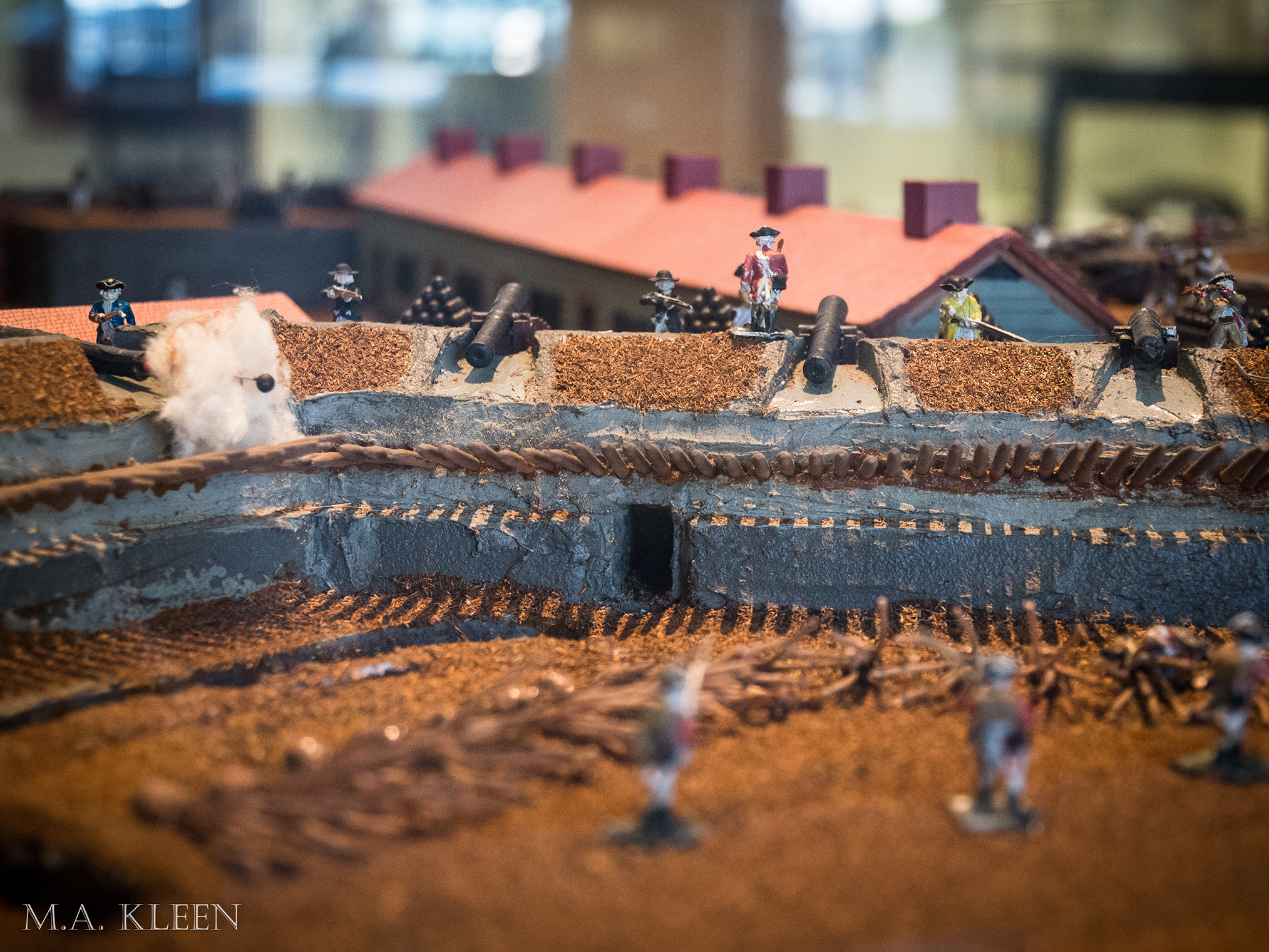If patriot-turned-traitor Benedict Arnold’s reputation wasn’t already bad enough, the massacre of American forces at Fort Griswold earned him a particularly reviled place in American historical memory.
Click to expand photos
The Battle of Fort Griswold (or Battle of Groton Heights) was fought on September 6, 1781 in Groton, Connecticut, between the American garrison commanded by Lt. Col. William Ledyard and British forces commanded by Patriot-turned-loyalist Brig. Gen. Benedict Arnold and Lt. Col. Edmund Eyre during the Revolutionary War. The battle was a British victory; Fort Griswold was seized and New London burned, but the British did not achieve any long term gains. The British surrender at Yorktown, Virginia a month later effectively ended the war in the Continental US.
Brig. Gen. Benedict Arnold’s raid on New London, Connecticut was an attempt to divert General George Washington from attacking Lord Cornwallis’s army in Virginia. Arnold, who was from the area, believed Fort Griswold, across the Thames River from New London, was only partially constructed and would not be difficult to seize. By the time he realized his mistake, Lt. Col. Edmund Eyre’s assault force had already engaged the fort and it was too late to recall them.
Eyre attempted to persuade the fort’s 150 defenders to surrender, but they vowed to fight. The first British assault was scattered by artillery. Major William Montgomery then stormed the fort at a sparsely-defended point, but was killed by a freed slave named Jordan Freeman. Montgomery’s men opened the gate from the inside, and the garrison attempted to surrender.
There is controversy over what happened next. According to some accounts, when Lt. Col. Ledyard held out his sword in surrender, the British officer who took it used it to kill him in cold blood. British soldiers then proceeded to massacre the remaining prisoners. According to other accounts, the British thought the surrender was a ruse, or that some Continental soldiers were still fighting while others tried to surrender.
Whatever the case, most of the 150 man garrison were killed or wounded and the massacre became a rallying cry. The British, considering it a costly victory, lost 52 killed and 145 wounded in the assault. It would be the last British victory in the northeast.
Fought between Great Britain and her Thirteen American Colonies from 1775 to 1883, the Revolutionary War led to a Declaration of Independence and the formation of the United States of America in 1776. The Thirteen Colonies won their independence, at the cost of an estimated 158,000 British, American, French, German, Spanish, and American Indian lives. It was a dynamic and surprisingly international conflict.
Today, Fort Griswold is preserved as Fort Griswold Battlefield State Park. The 135-foot tall granite obelisk commemorating the battle was erected between 1826 and 1830. The memorial gate was built in 1911. Originally the monument caretaker’s house, the 1830 museum building has a respectable collection of Revolutionary War artifacts, including Colonel William Ledyard’s sword, and a diorama depicting the battle on September 6, 1781.
Fort Griswold Battlefield State Park, at Park Avenue and Monument Street in Groton, Connecticut, is open daily sunrise to sunset, but the monument and museum are open Wednesday through Sunday from 9:00 am to 5:00 pm from Memorial Day through Labor Day. Admission is free, but donations are appreciated. Email info@fortgriswold.org for more information. Street parking is available.






3 replies on “Fort Griswold Battlefield State Park”
Thanks! It’s worth a visit
LikeLike
Reblogged this on Practically Historical.
LikeLike
Excellent posting.
Definitely on my list.
LikeLiked by 1 person